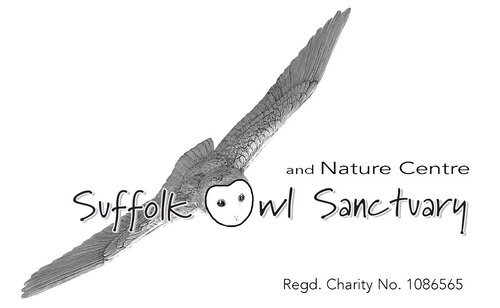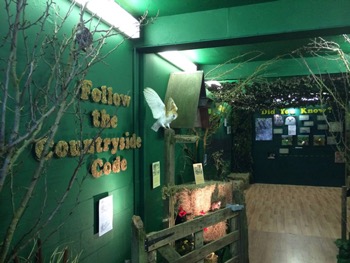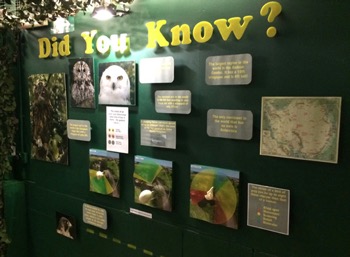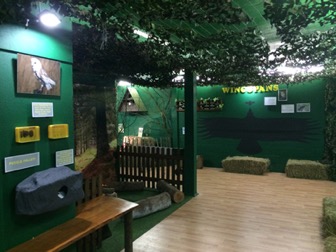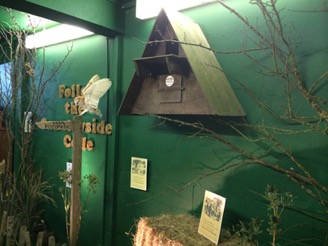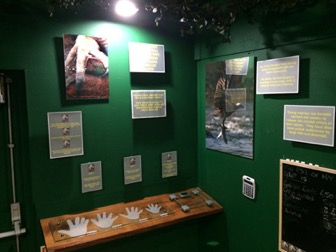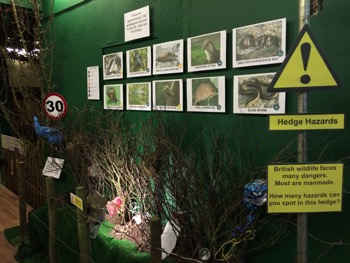In the last two years, the breeding activity of Suffolk’s wild owl populations has taken a real hammering - the result of an extreme & prolonged period of wet weather which devastated the 2012 season and a long cold snap extending through until late March 2013 that further compounded the problem. As widely reported, the result was an alarming decrease in wild owl breeding success, in some cases last year recording a drop of more than 90% over previous seasonal highs.
But in monitoring the East Anglian Wild Owl Nest Box scheme - the initiative Suffolk Owl Sanctuary jointly operates with The Thornham Owl Project - we can confidently report a remarkable recovery has taken place this year. Over 100 Barn Owl progeny were ringed from just 26 of the network of 167 wild Barn Owl nest boxes in the scheme when it was inspected by the beginning of the month - an average of over 3.5 progeny for each nest site.
These Barn Owl chicks are in the region of 50 days old and are already showing the very distinct markings and colouration of these beautiful, stunning birds
Indeed, it promises to be the best year yet for an enterprise focussed on providing secure roosting sites for wild Barn Owls and other threatened bird of prey species whose natural habitat is being eroded as man encroaches on the East Anglian countryside.
Spokesman for the Thornham Owl Project, Roger Buxton, is delighted: “2014 is turning out to be a bumper year! At the beginning of the month we had clocked up the 100th chicks ringed - a record for the scheme. Last year was very poor, with only 19 pulli (young owl chicks) registered for the whole season. We still have 60 more boxes to check and from the evidence we have seen, it’s possible that many Barn Owls will raise a second clutch before the summer is out, so a further check of the network at a later date will be necessary to ascertain the magnitude of the improvement.
With expert handling, the weight and size of each pulli (young owl chick) is carefully recorded and ringed, information which is shared with other organisations to contribute to a nationwide picture of owl population trends
Other owl species who take advantage of the total of nearly 300 nest boxes in East Anglian Nest Box Scheme have also benefitted. “The regional Tawny Owl population has staged an equally impressive recovery in 2014 - from no chicks at all last year in our network to 26 so far this year, which is another record for our project.”
The breeding activity of Tawny Owls was devastated in 2013, with some surveys showing zero-based results. This year, there are signs of substantial reversals of fortune...
Roger, who with his Thornham colleague Kevin Boyce and Dean from S.O.S. between them visit all the boxes to record raptor populations as well as cleaning, repairing or replacing the boxes themselves, is equally enthusiastic about the revival in the fortunes of the Kestrel, another species which is under threat.
“So far we have ringed 34 kestrel pulli so far, from 10 boxes, with further man-made nest sites to be checked. It appears that kestrels started their breeding cycle early this year, I imagine mainly due to the mild weather conditions. In some cases we suspect the youngsters had already fledged when we arrived to check and some mums were already sitting on a second clutch.”
The East Anglian Wild Owl Nest Box Scheme - which is funded entirely by private donations, for which we thank our generous supporters - is just one of a number of serious endeavours throughout the country whose aim is the conservation of threatened owl species. Each nest box inspection is carried out under a License issued by DEFRA (it is illegal to approach a wild owl nesting box without one) and the results of the progeny surveys conducted are included with the those of the Suffolk Community Barn Owl Project as part of annual report of The Barn Owl Trust.
